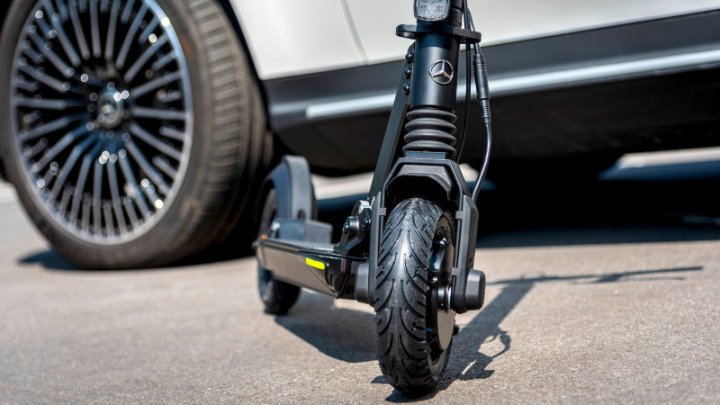
Mercedes-Benz quietly announced at the recent Frankfurt Motor Show that it’s jumping on the micromobility bandwagon with an electric scooter. Micromobility refers to short-distance transport, usually less than five miles. With urbanization on the rise, the majority of trips people take fall within the category of micromobility and thus are prime candidates for bike and scooter usage. In the United States, for instance, roughly 60% of all trips are five miles or less.
Buried in a press release about accessories was the first mention of a partnership with Swiss micromobility maker, Micro. With its e-scooter scheduled for an early 2020 release, the Stuttgart automaker has found a way to keep the Mercedes name relevant to even those that have ditched the automobile. No specifications were announced by Mercedes-Benz, but scooters are averaging about 7.5 to 10 miles between charging, and a top speed of roughly 15 miles per hour.
Micromobility is more than just a buzzword for electric scooters, e-bikes, and even electric skateboards. By the year 2030, the micromobility market is projected to be worth between $200 billion and $300 billion dollars. Worldwide, investors have already poured more than $5.7 billion into micromobility startups during the past four years.
In June, Germany passed into law the use of electric scooters on its roadways. In that short time, the electric scooters have blossomed all over German city streets. Not to be left behind, rival automakers Volkswagen and BMW have made similar announcements. Other automakers betting on the expansion of micromobility are Hyundai, Ford, and General Motors.
“These agile, electrically powered scooters are the perfect way to cover short distances quickly and without harming the environment,” Mercedes wrote in its release. “The new E-Scooter in the Mercedes-Benz EQ brand family was developed in cooperation with the scooter specialist Micro, and is specifically designed for the first or last mile, making it the perfect companion for those wanting flexible mobility solutions.”
As metropolitan cities grow more congested and options to widen roads decrease, people will look for an option to deal with their environment. Automakers pay close attention to trends and mobility of all kinds. Judging by the growing movement into micromobility, it certainly looks as though this is the next big thing.



